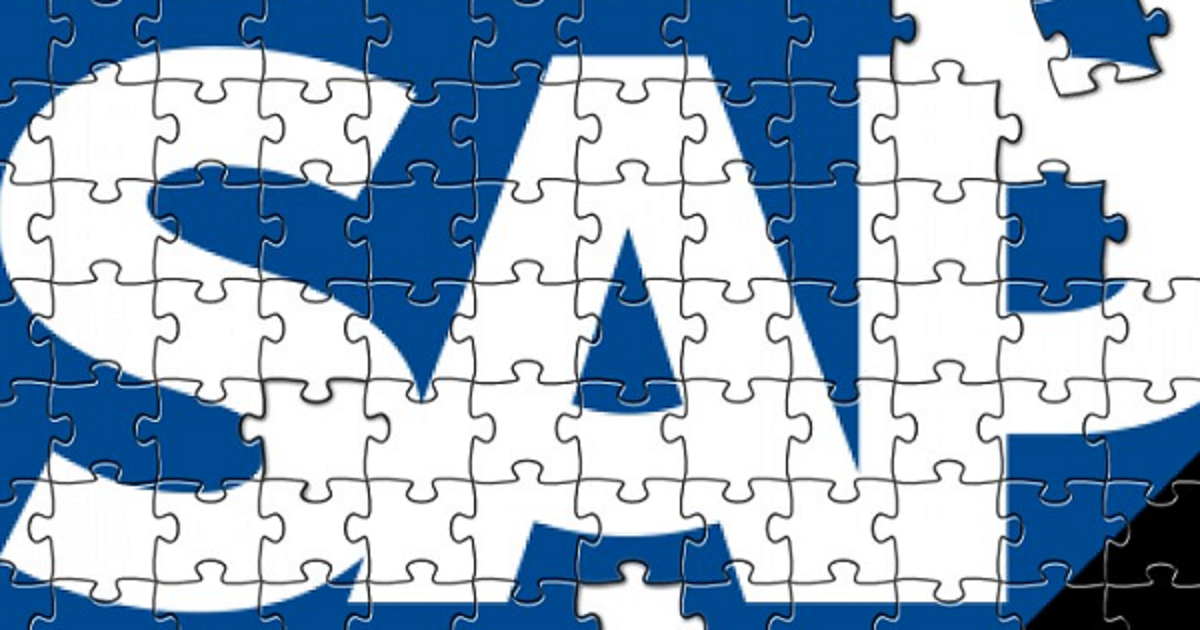Integration Components, MySAP ERP 2003 and SAP NetWeaver
We are not moving to the successor of SAP R/3 Enterprise yet. We are looking at how SAP clubbed various new dimensional components and basis into an umbrella term – SAP NetWeaver and how the SAP R/3 Enterprise expanded by including more components.
Until Web AS 6.10 (previously Basis), the HTTP capabilities were delivered using Internet Transaction Server (SAP ITS) and XML was handled using SAP Business Connector (SAP BC). ITS and BC accepted HTTP/XML and converted that into DIAG protocol (DIAG is used by SAP GUI to talk to Application Layer).
Web applications (called as Internet Application Components or IACs) like Employee Self Services were written specifically for SAP ITS. ITS continues to exist now, integrated in SAP kernel, but it is not the sole facilitator of HTTP protocol anymore.
With Web AS 6.10, SAP includes native support for HTTP and XML using Internet Communication Manager (ICM). Business Server Pages (BSP) were developed that would execute business logic in a browser, similar to how a transaction is executed in SAP GUI.
Like Basis 4.6D, there is no SAP R/3 system based on Web AS 6.10.
Moving on to Web AS 6.20: The SAP J2EE engine was added to SAP product portfolio by acquiring In-Q-My and its JAVA Application Server.
Availability of Java programming language in the Web AS paved way for software components such as SAP CRM 3.1 (note the version), SAP Enterprise Portal and SAP Exchange Infrastructure. SAP grouped up integration components like XI, EP, KM and BW and called the group as SAP NetWeaver. The function of this group was to help integrate various applications in an enterprise using open standards.
Despite heterogeneous IT environment, People Integration manages to provide employees quick access to various systems and functions. The data in a company is everywhere-in structured and unstructured form. Information Integration helps collate and analyze this information. A business process runs through multiple systems within the organization and outside its boundaries. Process Integration provides the infrastructure to integrate these processes. The Application Platform consists of the Web AS JAVA, Web AS ABAP along with support for third-party and/or SAP’s OS and DB.
The components of NetWeaver are arranged as compartments that resembles a fridge and the diagram/architecture of NetWeaver is often referred as such.
The Application Platform (Web AS ABAP and Web AS JAVA) is the base for SAP NetWeaver and SAP NetWeaver is the base for SAP Solutions such as MySAP ERP. The functionalities that could not be catered to by Basis layer alone were now possible with NetWeaver.
MySAP ERP architecture looks like this beast:
- Self-Services enable non specialist users (PEBKAC type) to create, view, and edit data without needing help from expert users.
- Self-service Requisitioning allows employees to purchase goods/services directly, while they stick with the policies, and approved suppliers and agreements.
- Strategic Enterprise Management (SEM) provides analytics (therefore needs BW) to plan back office operations based on global and strategic operations of the enterprise.
- Internet Sales allows an enterprise to set up a web shop with product catalog, search capabilities, order placement, tracking etc.
The non-modifying plugins became part of NetWeaver (as NetWeaver Plug-Ins)
Enterprise Service-oriented Architecture, MySAP ERP 2004 and NetWeaver 2004
When you open an HTML page in a browser, let us say, to view a person’s contact details, the page presents information that you can read and understand. Of all the information that is available, if you were looking for fax number, you can discern that information from the page.
If a program has to do the same thing, you need to write logic to filter all other information out and then get the fax number part out. This is made easy by Web Services. By following well laid standards, web services provide the output (in this example the fax number) that the caller (non-human) can understand easily.
As web services are based on open standards, it doesn’t matter in which programming language or on what hardware the caller made a request and in which programming language or on what hardware the web service was written to provide the reply.
Web services operate at a very granular level. What kind of business transaction gets a fax number and not do anything with it? A hypothetical logical step would be to fax an invoice to a vendor and record that a fax was sent out (successfully or otherwise).
Imagine a collection of web services combined to look like a single web service that takes the invoice number as input, gets vendor ID from invoice, looks up vendor’s fax number using a web service, faxes the invoice using another web service, updates the records with the result of faxing using a web service. Such a web service is called Enterprise Web Service.
Enterprise web services form the business-level building blocks of a business process. SAP’s core application (SAP R/3 Enterprise) adapted an architecture (Enterprise Services Architecture) that is based on enterprise web services. Because of this change SAP R/3 Enterprise core got a new name SAP ERP Central Component (ECC) core. The name Enterprise Services Architecture was later changed to Enterprise Service-oriented Architecture (ESoA).
The fridge changed too. BW and ITS became default components of NetWeaver. SEM (which depends on BW) and Self-services which are based on ITS (remember IACs?) moved from being additional components to being part of ECC.
Depending on the business needs, a developer can now write application that can interact with user or call a service hosted by SAP system or third party system. Such applications are called as Composite Applications. Composite applications may be shipped from SAP or developed by third party vendors. SAP Composite Application Framework (CAF) includes the methodology, tools, and runtime to develop and execute composite applications, called SAP xApps.



